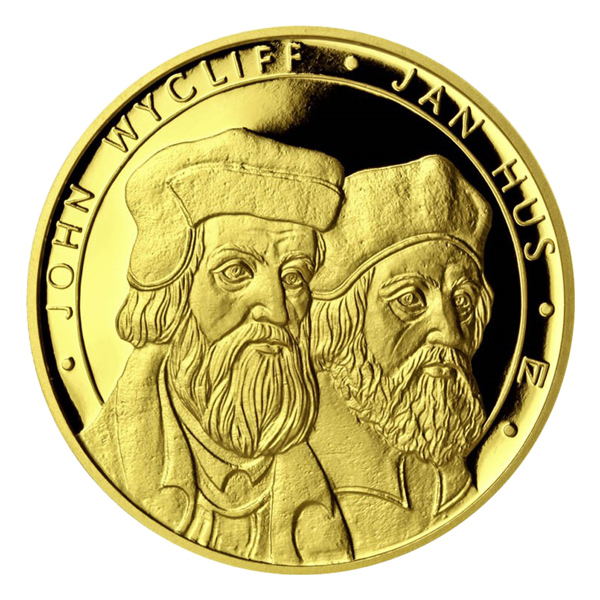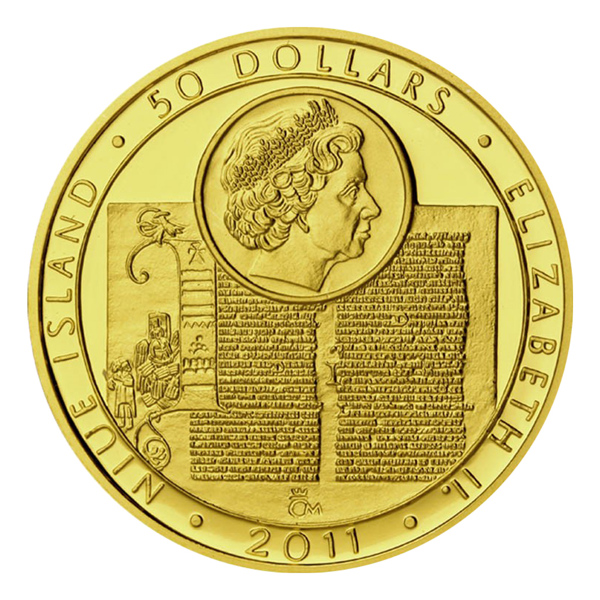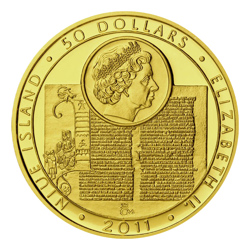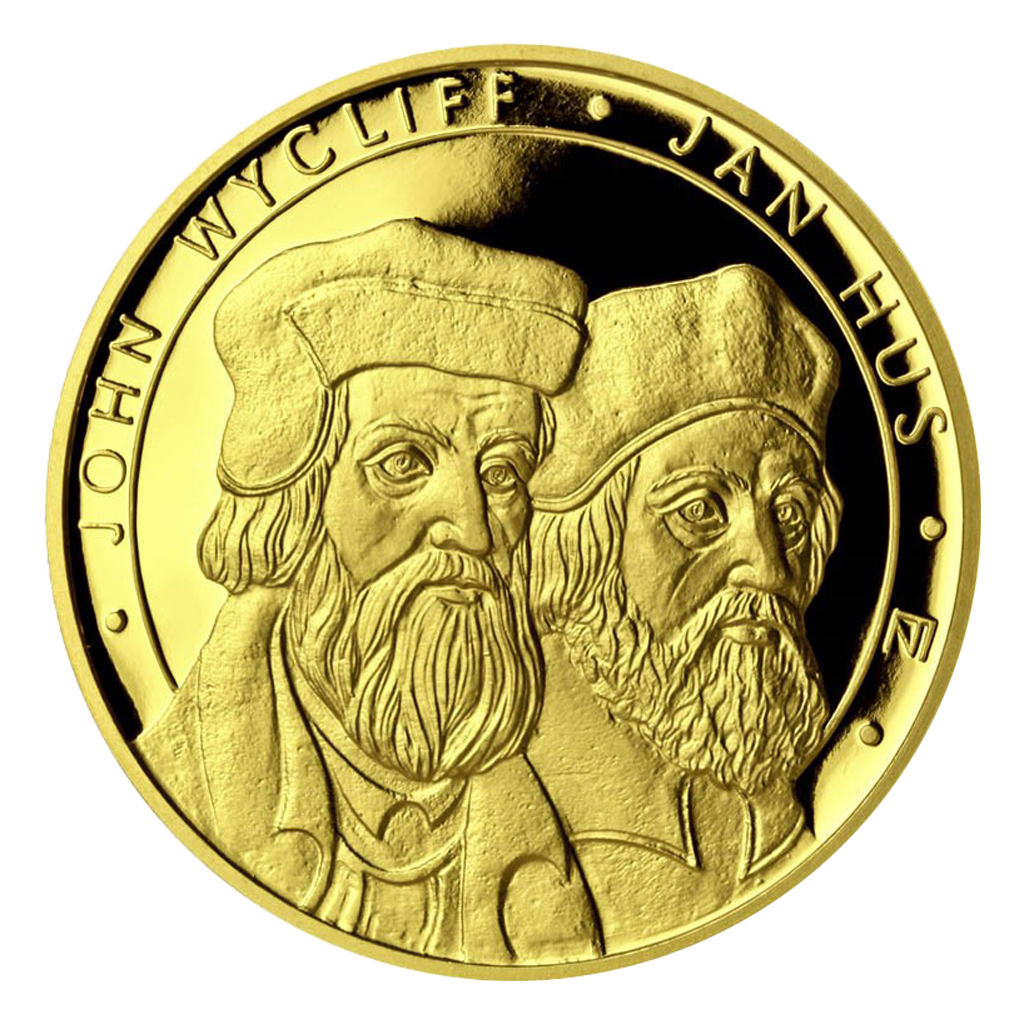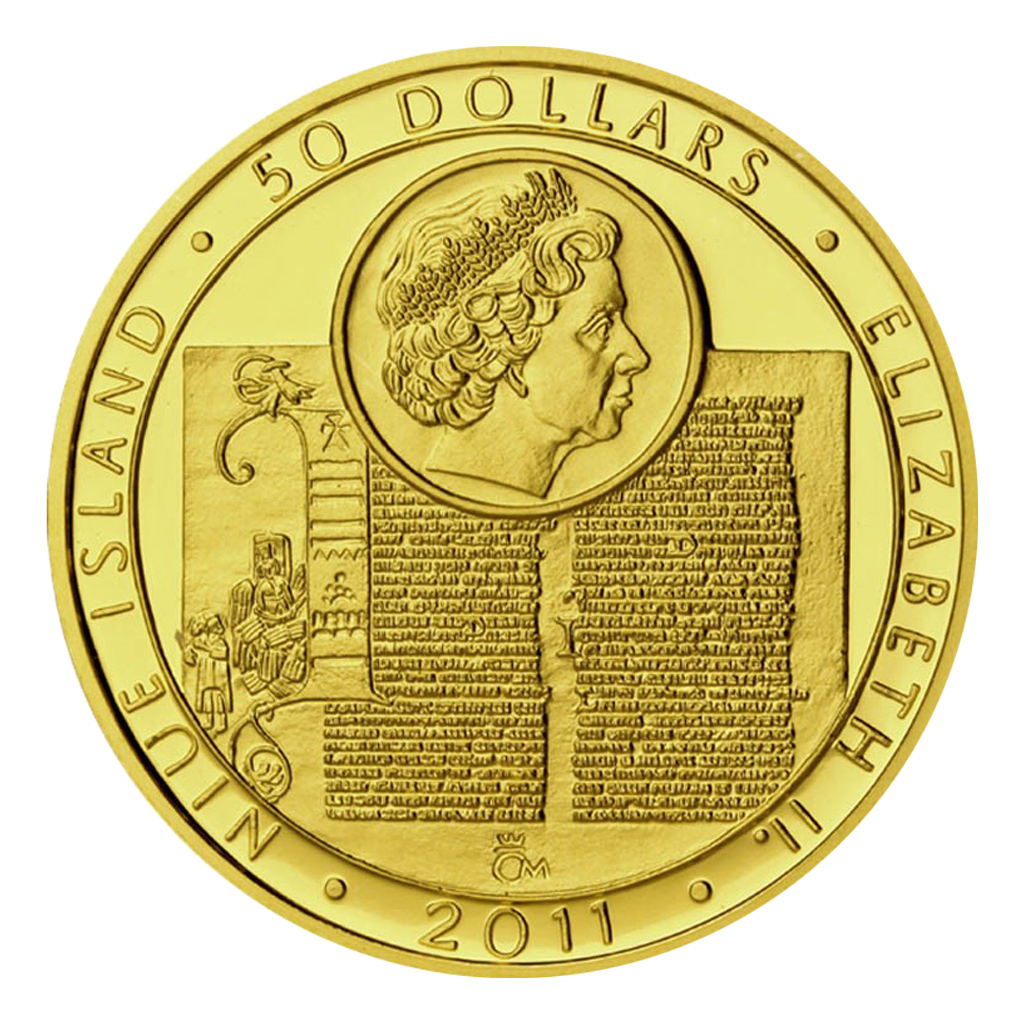Gold investment coin John Huss and John Wycliff proof
Personal pickup at the store
Gold investment coin 50 NZD John Huss and John Wycliff proof
John Wycliff (b. between 1320 and 1330 – d. 31 December 1384) was an English theologian, philosopher and Church reformer, as well as promoter of the first complete translation of the Bible into English (so-called Wycliff Bible). He is also considered to be one of the forerunners of the Protestant Reformation. His writings were brought to Bohemia by Prague University scholars, the most outstanding of whom was Jeroným Pražský.
In 1367, Wycliff was apparently removed from his post of warden of the Canterbury Hall. He appealed against this decision to pope Urban V but the outcome was unfavourable for Wycliff. In 1377, he was accused of spreading fallacies. According to his teaching (work “Protestatio“), the Church must not own any secular property, the only source of faith are the Scriptures, the claims of the papacy are unhistorical, the pope is the Antichrist and the Church does not need him. In crusades he saw no more than an opportunity for loot and plunder. In his opinion, the clergy should live in poverty as it did in the days of the apostles. The London Synod (1382) condemned 24 Wycliff’s propositions and on the basis of the Archbishop’s ruling he lost his job in Oxford. His writings were burnt. Wycliff spent last years of his life in Lutterworth, where he wrote books and sermons.
Master John Huss (b. circa 1371 Husinec – d. 6 July 1415 in Constance) was a Roman-Catholic priest, Czech theologian, church reformer and preacher. From 1398 he lectured at the Prague Charles University and between 1409–1410 was also its rector. In his theological works he criticised moral decay of the Catholic clergy of the period, and took over certain ideas of John Wycliff. The Catholic Church condemned Huss as a heredic, his teachings as a heresy and in 1411 he was excommunicated.At the Council of Constance where Huss went to give an account of his doctrine, he was tried, condemned as a heretic and, when he refused to renounce his teaching, he was burnt at the stake. In 1999, Pope John Paul II said he regretted the cruel death of John Huss and recognized him as a reformer of the Church.
The effigy of queen Elizabeth II is featured in the upper part of the obverse side, in the middle there is a piece of text from the Martinická Bible of the 15th century with the initial and the oldest illustration of the burning at the stake of Master John Huss in Constance. The text in circumscription reads NIUE ISLAND - 50 DOLLARS - ELIZABETH II – 2011, and above the date is the mintmark of the Czech Mint
On the reverse side the author placed a double-portrait of John Wycliff and John Huss and in the circumscription their names: JOHN WYCLIFF – JAN HUS, as well as his own mark – Fz.
Limited edition 1,000 pcs.
 čeština
čeština
 slovenčina
slovenčina
 english
english
